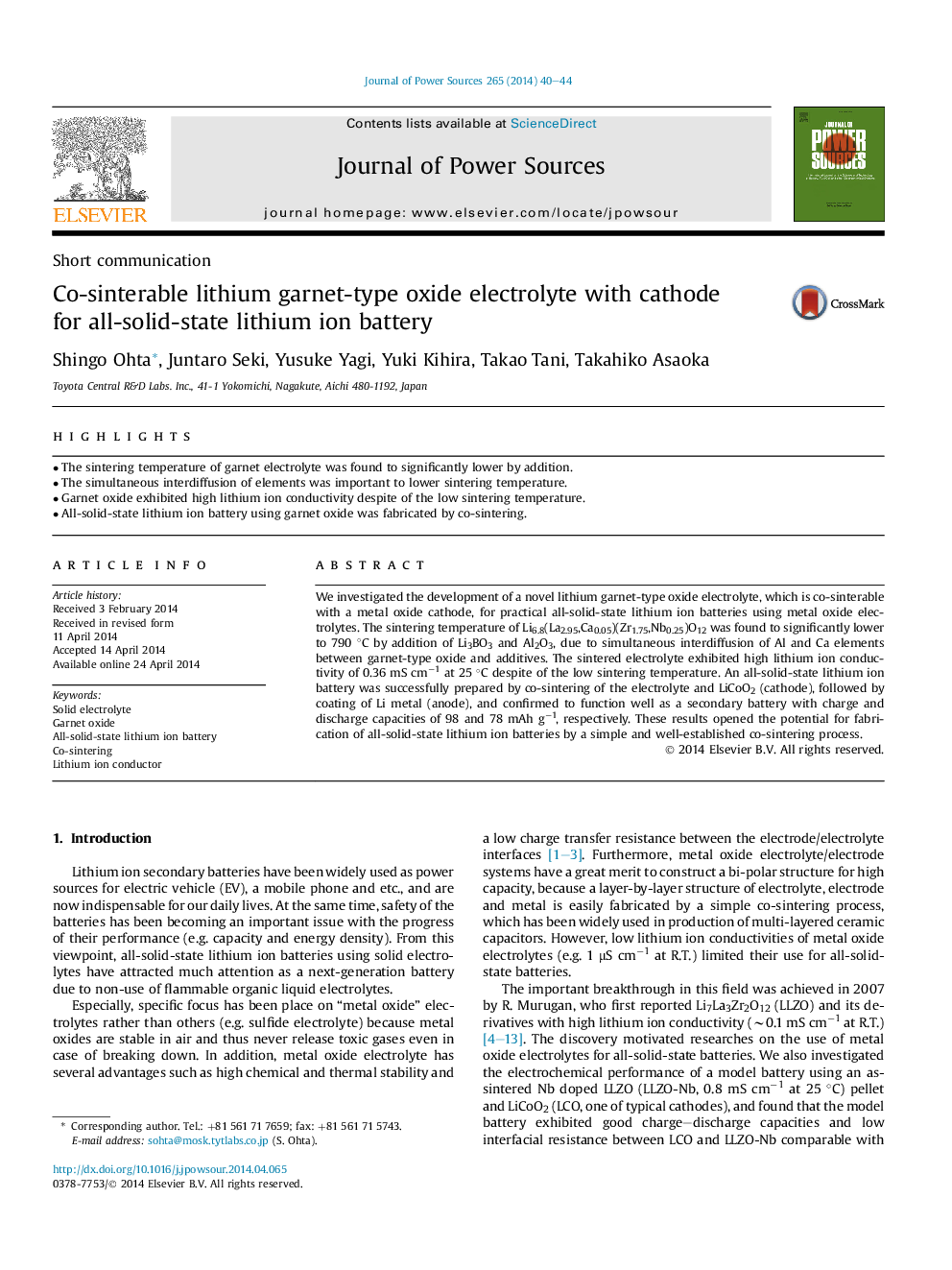| Article ID | Journal | Published Year | Pages | File Type |
|---|---|---|---|---|
| 1284048 | Journal of Power Sources | 2014 | 5 Pages |
•The sintering temperature of garnet electrolyte was found to significantly lower by addition.•The simultaneous interdiffusion of elements was important to lower sintering temperature.•Garnet oxide exhibited high lithium ion conductivity despite of the low sintering temperature.•All-solid-state lithium ion battery using garnet oxide was fabricated by co-sintering.
We investigated the development of a novel lithium garnet-type oxide electrolyte, which is co-sinterable with a metal oxide cathode, for practical all-solid-state lithium ion batteries using metal oxide electrolytes. The sintering temperature of Li6.8(La2.95,Ca0.05)(Zr1.75,Nb0.25)O12 was found to significantly lower to 790 °C by addition of Li3BO3 and Al2O3, due to simultaneous interdiffusion of Al and Ca elements between garnet-type oxide and additives. The sintered electrolyte exhibited high lithium ion conductivity of 0.36 mS cm−1 at 25 °C despite of the low sintering temperature. An all-solid-state lithium ion battery was successfully prepared by co-sintering of the electrolyte and LiCoO2 (cathode), followed by coating of Li metal (anode), and confirmed to function well as a secondary battery with charge and discharge capacities of 98 and 78 mAh g−1, respectively. These results opened the potential for fabrication of all-solid-state lithium ion batteries by a simple and well-established co-sintering process.
